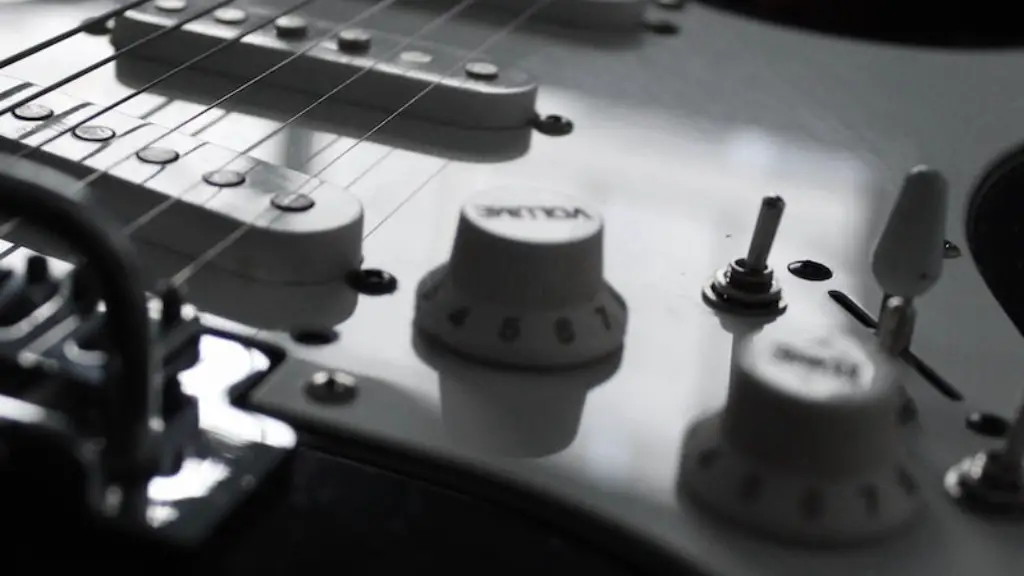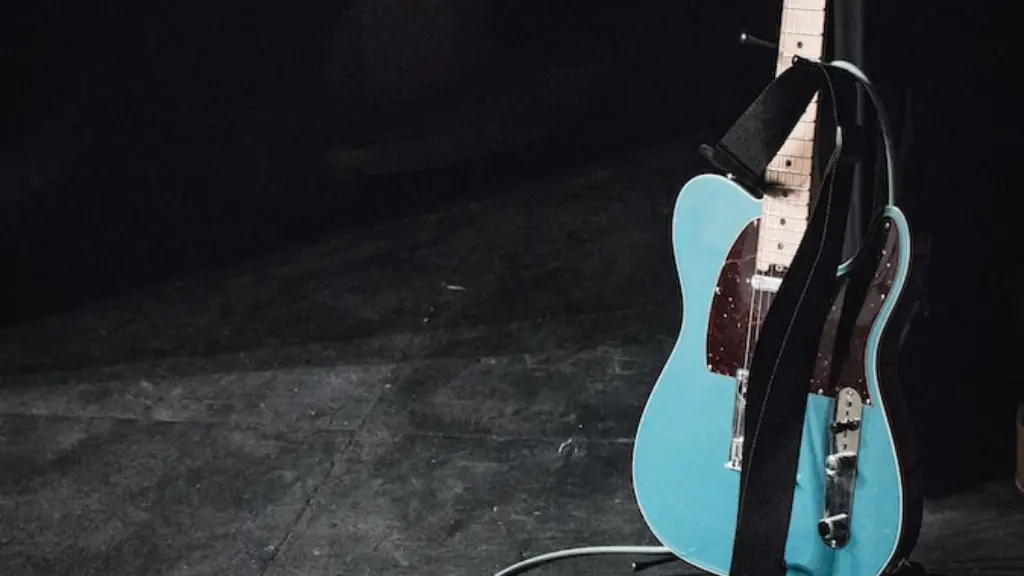Changing the strings on an electric guitar is an easy and important task. Not only does it improve sound quality and playability, but it also keeps your guitar in good condition.
Before you start, make sure you have a set of new strings and a pair of wire cutters. It’s also a good idea to have a soft cloth to wipe away any debris that may fall from the old strings. To begin, loosen the tuning pegs on each string until they are completely loose.
Next, remove the strings one at a time, starting with the low E string. Cut off or unwind any excess string from the tuning peg and discard it. Then, take one of the new strings and insert it through the bridge hole before threading it through each tuning peg until it is tight. Repeat this process for each string.
Once all new strings are in place, tune them until they are in proper pitch. Finally, stretch each string several times and retune if necessary. With that done, your electric guitar is ready to go!
Changing Electric Guitar Strings
Changing the strings on your electric guitar is a simple task that doesn’t require much time or effort. First, take off the old strings and discard them. Then check to make sure the bridge saddle, nut and string retainer are in good condition before inserting the new strings. Once you have the new strings ready, pull them through the headstock and begin threading them through the tuning keys. Make sure to wind each string up to the correct tension, then lock it in place with a string retainer or locking tuners if your guitar has them. Finally, tune your guitar up to pitch and you’re done!
Properly maintained strings will keep your electric guitar sounding great for years to come, so be sure to replace them when they become worn or frayed. Changing strings on a regular basis can also help keep your instrument in tune more consistently – a must-have for any guitarist looking for professional results.
Unwind the Old Strings
Changing strings on your electric guitar is a fairly simple task that can be accomplished with minimal tools. Start by unwinding the old strings from the tuning pegs. To do this, hold the string firmly with your left hand and turn the peg counter-clockwise with your right hand until it’s completely unwound. Once all of the strings have been removed, it’s time to install the new ones.
The first step is to thread each string through its respective tuning peg hole, starting from the bottom string and going up. Then loop each string around itself near the top of the fretboard and pull tight so that it won’t come undone when you begin tuning. Finally, begin to wind each string up by turning the tuning peg clockwise until it is securely in tune. Be sure not to overtighten them as this could cause damage. Once all of the strings are in tune, you’re ready to start playing!
Checking the Bridge and Tuning Pegs
Before you can get started putting new strings on your electric guitar, it’s important to check the bridge and tuning pegs. The bridge should be free from rust and corrosion, and all of the tuning pegs should be securely tightened. If any of the tuning pegs are loose, tighten them with a small adjustable wrench.
Next, check the intonation by playing each string at the 12th fret and comparing it to the open string. If there is a noticeable difference in pitch between them, you may need to adjust the intonation screws located on either side of the bridge saddle.
To finish setting up your guitar for new strings, make sure there is no fret buzz or loose fret wires by pressing down on each one with your finger. If any are sticking up, use a flathead screwdriver to carefully press them down until they are level with the rest of the frets.It’s also a good idea to lubricate any areas that may have become dry over time. Once everything is in order, you’re ready to start putting new strings on your electric guitar!
Putting New Strings on an Electric Guitar
Putting new strings on an electric guitar is essential to keeping your instrument in shape and ready for performance. It’s a relatively simple process, but it does require a few steps. First, remove the old strings, starting with the low E string and working your way up. Then, thread the new strings through the bridge—this is important, as it helps keep the strings in tune and prevents them from slipping. Finally, use the tuning pegs to tighten all of the strings until they are in tune.
For more detailed instructions, it’s best to consult your guitar’s manual or watch a tutorial online. Properly stringing your guitar is a great way to ensure that you’ll get the best possible sound when you play—so don’t forget to do it regularly!
Wind the Strings Around the Tuning Pegs
Changing strings on an electric guitar is an important part of keeping your instrument in good condition. It’s also a great way to customize your sound. The first step in replacing your strings is winding them around the tuning pegs. Start by taking the ball end of the string and inserting it into the bridge of the guitar. Then, wind it around the tuning peg in a counter-clockwise direction until there are three or four wraps left on the peg. Be sure to keep the string tight as you wrap it around, so that it stays in place.
Next, use your fingers or a pair of pliers to turn the peg clockwise until you feel resistance. This will help keep the string from slipping when you start to play. Once all of your strings have been wound around their pegs, tune each one individually using an electronic tuner or by ear until they sound correct. Now you’re ready to get back to playing! With some practice, changing strings can be done quickly and easily.
Putting New Strings on an Electric Guitar
Changing the strings on an electric guitar is a fairly straightforward task. It’s important to use the right kind of strings for your guitar and to ensure they’re properly installed. You’ll need a few basic tools, such as a string winder and bridge pins, as well as a good quality set of strings. The first step is to remove the old strings by loosening them one at a time and carefully sliding them off the tuning pegs and away from the bridge. Once all the strings are off, you’ll need to wipe down the fretboard with a damp cloth to remove any dirt and grime.
Next, begin installing your new strings by threading one end through the bridge hole and pulling it up through the nut slot. Then wrap it around the tuning peg in a clockwise direction before tightening it up with your string winder. Once all of your strings are securely in place, use your bridge pins to secure them into place on the bridge saddle. Finally, you can tune your guitar using an electronic tuner or by ear until each string sounds just right. With this simple task complete, you can now enjoy playing your freshly strung electric guitar!
The End
Replacing the strings on an electric guitar is a relatively simple task and can be done in a few steps. To begin, remove the old strings from the machine head and bridge, wiping away any dust or grime that has accumulated. Next, feed the new strings through the bridge and attach them to the machine head. Finally, tune your guitar using a tuner and you’re ready to rock!
In conclusion, changing strings on an electric guitar is a straightforward process that requires only basic tools. After removing the old strings and cleaning off any dirt or residue, simply feed the new strings through the bridge and attach them to the machine head. Once you have tuned your guitar you are ready to play!





